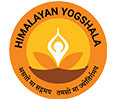History of Yoga
Sergey Vorobey has prepared for the Himalayan Yoga Academy
300 BCE - the term “yoga” first appears in the Hindu scripture Katha Upanishad: Yama, God of Death, teaches young Naciketas about the instrument which helps to live in happiness and not be afraid of the death – about yoga
300 BCE - Shvetashvatara Upanishad describes the procedure during which the practitioner is sitting upright and with the help of the breath controls the mind – Pranayama
100 BCE - Maitri Upanishad formalizes the sixfold form of yoga
- Breathe control (Pranayama)
- Withdrawal of the séances (Pratyahara)
- Meditation (Dhyana)
- Mind concentration (Dharana)
- Philosophic reflection (Tartka)
- Self-resolution ( Samadhi)

The Bhagavad Gita (Mahabharata section) introduces three prominent types of yoga:
-
- Karma yoga: The yoga of action.
- Bhakti yoga: The yoga of devotion.
- Jnana yoga: The yoga of knowledge
Yoga Sutras of Patanjali. First fullest guide, which describes yoga practice. The work contains 195 sutras. It was written within the influence of the samkhya philosophy and contains Buddhism and Asketism (Shraman) thoughts.
Patanjali’s describing Eight-Limbed Yoga:
- Yama
- Niyama
- Asana
- Pranayama
- Pratyahara
- Dharana
- Dhyana
- Samadhi
Sutras Patanjali is very famous literature about yoga and perhaps the most expert document in the modern Hatha-Yoga, though it doesn’t contain detailed description of Asanas.
In the text are described 6 kinds of body cleansing for yoga practice (Shatkarma)
- Dhauti
- Basti
- Neti
- Tratak
- Nauli
- Kapalabhati
